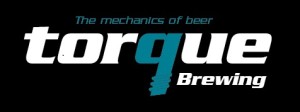 Jared Carlberg learned an early lesson about the beer industry. With big hopes he got involved a while back with another brewery project, but things didn’t turn out as expected. Carlberg learned from that experience. He decided if you are going to do a brewery, get serious. [NOTE: This paragraph was edited to correct a factual error].
Jared Carlberg learned an early lesson about the beer industry. With big hopes he got involved a while back with another brewery project, but things didn’t turn out as expected. Carlberg learned from that experience. He decided if you are going to do a brewery, get serious. [NOTE: This paragraph was edited to correct a factual error].
So he knew his next project had to be more secure. He spent the last year or so building a team and a plan that has sustainability. The plan is Winnipeg’s Torque Brewing (no website yet, but here is the Facebook page).
Carlberg is a very successful homebrewer. He is a two-time Canadian Amateur Brewing Association champion and has won Best of Show 5 times. Clearly he has some brewing chops. But he knew that wasn’t enough. So he brought in some key partners, including: John Heim, a marketing expert; microbiologist Adam Olsen; mechanical engineer Phil Bernardin; plus a silent partner.
The five are getting into the business with no illusions. “We are not guys who got drunk one night and said ‘we should start a brewery’. We are going into this with our eyes wide open”. Talking with Carlberg, I can tell he is serious about building a significant brewery. He is reticent to give too many details about the brewhouse and the brewery size. His tone gives me the sense he has big plans and Torque Brewing will be bigger than the average craft brewing start-up.
They are moving deliberately and with care. Carlberg says their goal is to be “online within 12 months”. So don’t expect any Torque beer for your summer BBQ.
Carlberg says that good beer is the first priority. “We have a commitment to quality. While we are cognizant of the economic realities of brewing [in Western Canada], we will still always have quality. We are learning a lot from Regina’s Rebellion Brewing” in terms of how to attract people while maintaining high quality.
“We hope to attract the typical beer drinker but bring them to the craft beer side. Get them to realize the potential of beer”, says Carlberg.
Carlberg says the plan is to engage in a two-prong strategy. “We will start with a Bohemian Pils or Munich Helles. Something easy drinking but craft quality”. In addition they will produce “ultra-craft offerings like barrel-aging and sour beer”.
The goal is to produce beer that will “slowly bring more drinkers to the craft side.” Carlberg offers that their initial thoughts are to offer four to five mainstays, including something easy-drinking, like a pilsner, and then a red ale, a porter/stout, an American pale ale and an IPA.
As for the name, it is something of a compromise. “I lost the vote”, he says. In the end the name is designed to be accessible, memorable and effective. It just lacks a great story.
Despite his deep homebrewing roots, Carlberg does not see himself as a beer snob. “We are not so snooty about it”, he says. “We want to expand the market for quality craft beer”.
Consumers will have to wait a bit to see what Carlberg and partners can come up with. Hopefully it is worth the wait.


November 5, 2015 at 1:07 PM
Just an FYI: Jared is no longer involved with Torque Brewing.